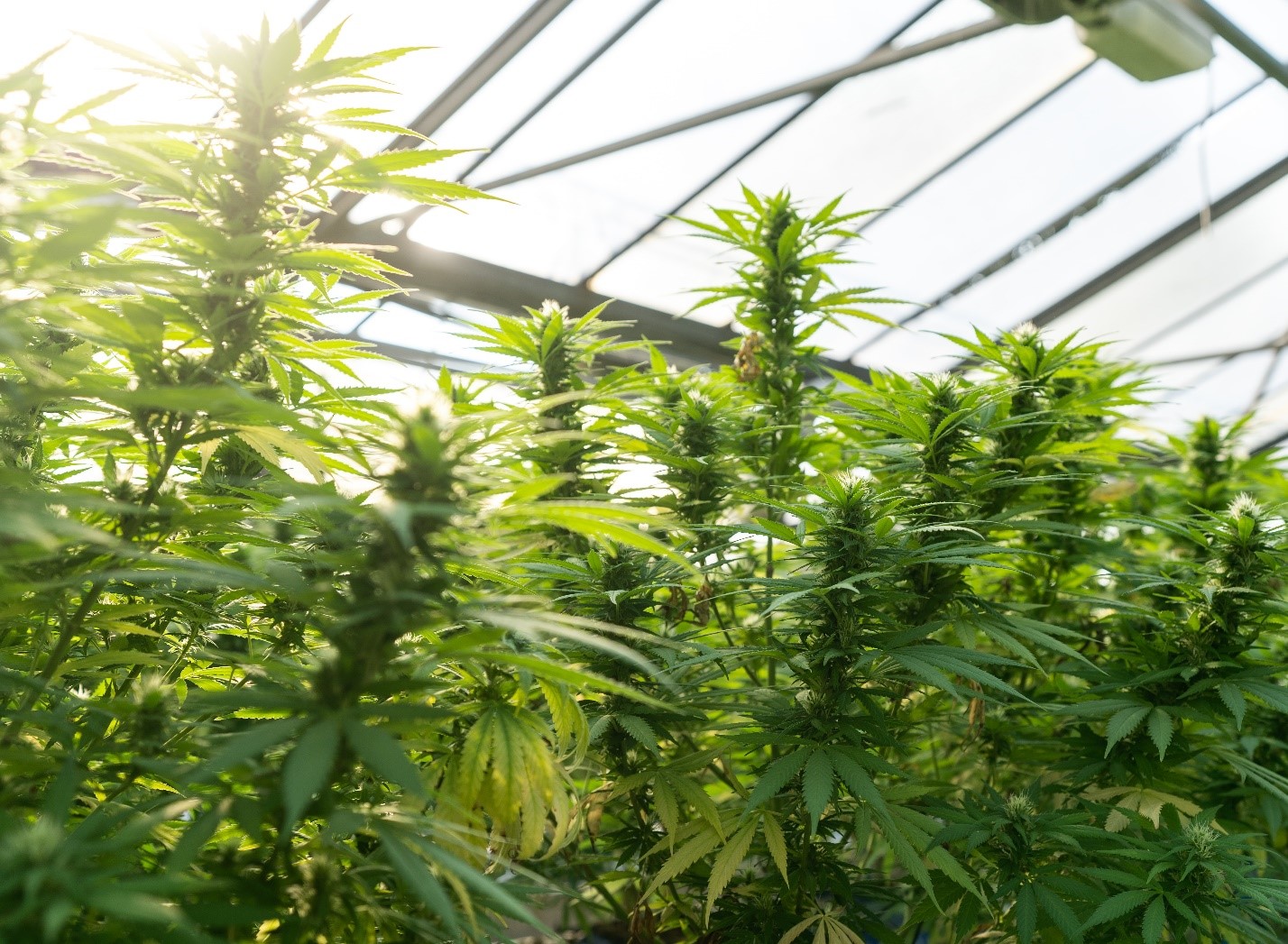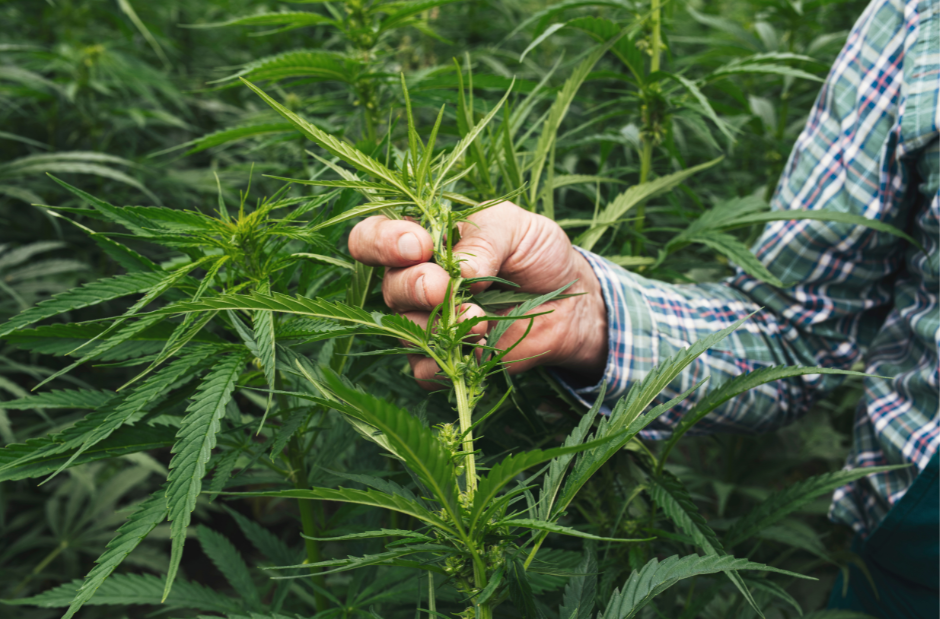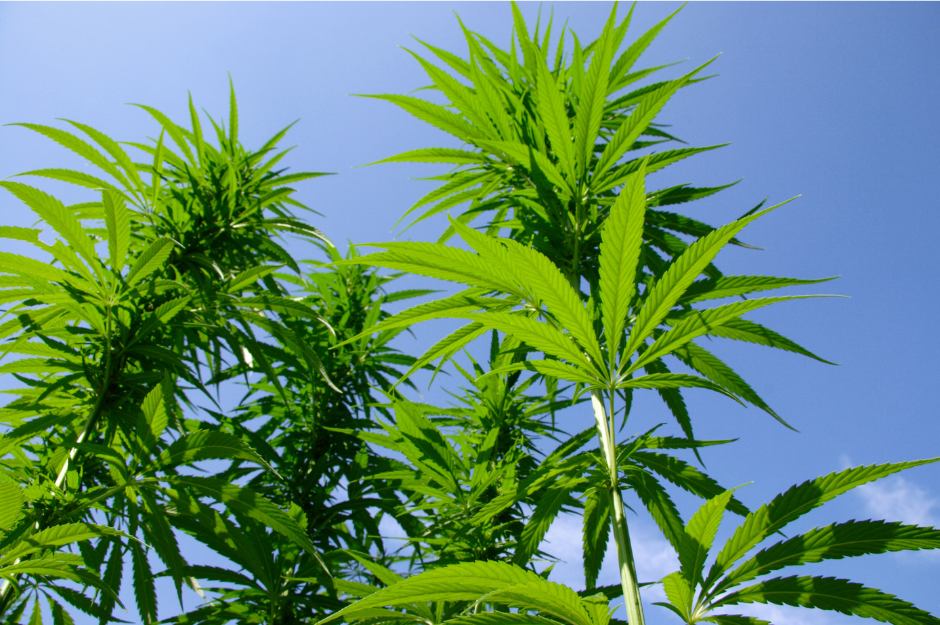Choose a different country or region to see the content specific to your location
Select Your Country/Region
Current Region:
 USA (EN)
USA (EN)
Utilizing fertilizer injectors to provide essential nutrients throughout hemp cultivation stages.
The growth duration of hemp varies depending on factors such as hemp variety, climate, soil conditions, and crop purpose. Generally, hemp seeds can take anywhere from 70 to 140 days to reach maturity, with some varieties taking longer than others.
In most cases, hemp is ready to harvest within 90 to 120 days after planting. However, the time may vary depending on the specific strain, cultivation practices, and climate conditions. Different types of hemp have varying growing seasons. Industrial hemp grown for its fiber typically requires a longer duration, whereas hemp grown for CBD oil generally requires a shorter time frame.
Hemp cultivation involves distinct stages: seed germination, vegetative growth, pre-flowering, and flowering. To ensure optimal yield, farmers remove male plants to avoid cross-pollination, preserving female plants responsible for cannabinoid-rich hemp buds. Ensuring the preservation of female plants is crucial since they produce the desired hemp buds containing cannabinoids and terpenes.

To support the growth of hemp plants and maximize yield, it is essential to utilize cannabis fertilizers specifically designed for hemp cultivation. These fertilizers contain nitrogen, phosphorus, and potassium, which are essential nutrients for hemp plants' growth and the production of high-quality hemp buds.
Overall, hemp is a fast-growing crop that can reach maturity in just a few months, making it an attractive option for farmers and cultivators seeking to harvest hemp buds for various hemp products. Consider the following characteristics that affect hemp growth:
Hemp is a dioecious plant, having separate male and female plants. Female hemp plants are valued for their cannabinoid-rich flowers, while male plants produce pollen for fertilization. To prevent pollination, it is crucial to identify and separate male and female plants during the pre-flowering stage in hemp cultivation.
If male plants are allowed to remain near female plants, they will release pollen that can fertilize the female flowers, leading to seed production. This process diverts the plant's energy away from producing cannabinoid-rich flowers, significantly impacting the overall quality and value of the crop.
To ensure high-quality hemp flower production, hemp farmers often remove male plants before they release pollen or use feminized hemp seeds, which guarantee that only female plants will grow.
The most valuable part of the hemp plant is the flower, where cannabinoids like CBD are concentrated. To achieve healthy and potent hemp flowers, proper air circulation is essential.
Ensuring good airflow within the growing environment serves multiple purposes. It helps prevent the buildup of moisture, which can lead to mold and mildew growth. Additionally, adequate air circulation strengthens the plants' stems, reducing the risk of lodging (plants falling over due to weak stems), and improves nutrient uptake.
With indoor hemp cultivation, growers often use fans and ventilation systems to maintain optimal air circulation. Outdoor hemp crops can benefit from strategic planting to maximize airflow between rows and within the canopy.
Hemp can be cultivated using various methods, each with its advantages and challenges. Indoor hemp cultivation provides growers with more control over environmental factors such as light, temperature, and humidity. By simulating ideal growing conditions, indoor cultivation allows for year-round hemp production and the ability to grow specific hemp varieties with strict environmental requirements.
Outdoor hemp cultivation, on the other hand, takes advantage of natural sunlight and may result in larger yields due to the plant's exposure to the full spectrum of sunlight. However, it is subject to weather fluctuations and seasonal limitations, as hemp is sensitive to frost and cold temperatures.
Greenhouse cultivation offers a compromise between indoor and outdoor methods. Greenhouses provide protection from extreme weather conditions while still allowing natural light to reach the plants. Temperature and humidity can be controlled to some extent, providing a more stable growing environment compared to outdoor cultivation.

While hemp is a resilient and fast-growing crop, it is not without challenges. Pests, diseases, and climate conditions can all impact hemp cultivation.
Pests such as aphids, spider mites, and caterpillars can damage hemp plants and reduce yield. Diseases like powdery mildew and gray mold can also affect hemp plants, particularly when environmental conditions are humid and conducive to fungal growth. Proper crop rotation, good air circulation, and timely application of appropriate fungicides are among the methods used to combat these diseases.
Hemp thrives in temperate climates with consistent rainfall, but it can also grow in arid regions with proper irrigation. Extreme weather events, such as heavy rains or droughts, can impact hemp crops and necessitate additional care and protective measures.
A fertilizer injector can be very helpful in hemp cultivation. By utilizing a fertilizer injector, hemp cultivators can effectively provide the necessary nutrients, including those found in cannabis fertilizers, to support the growth of their hemp crop.
In agriculture, farmers commonly use fertilizer injectors to supply plants with the nutrients they need to grow and thrive. These devices work by injecting fertilizer into an irrigation system, which allows for precise and controlled delivery of nutrients directly to the plant roots.
Hemp cultivation requires specific nutrients, including nitrogen, phosphorus, and potassium, to ensure optimal growth and yield of the hemp plants and buds. A fertilizer injector helps maintain the appropriate nutrient balance and provides these essential elements in the correct ratios to support the specific needs of hemp plants throughout their growth cycle.
In addition to nutrient delivery, a fertilizer injector can be used to maintain consistent pH levels in the soil, which is important for nutrient uptake by the hemp plants. This precision nutrient application can help prevent over-fertilization or under-fertilization, promoting healthy growth and maximizing the yield of high-quality hemp buds. When combined with suitable cannabis fertilizers, a fertilizer injector becomes a valuable tool in hemp cultivation, helping to enhance plant health, maximize yield, and contribute to the overall success of the hemp crop.
Explore Our Hemp Fertilizer Injectors
When it comes to selecting the best Dosatron fertilizer injector for hemp cultivation, it is important to consider the specific requirements of your hemp crop and the scale of your operation.
Dosatron offers a range of fertilizer injectors with flow rates and injection ratios to meet the needs of various crops and growing conditions. For hemp cultivation, experts typically recommend using a Dosatron model with a flow rate of at least 11 GPM and an injection ratio of 1:100 to 1:300.
The Dosatron D20S model, known for its high flow rate and wide injection range, is often a popular choice among hemp growers. This model can handle flow rates of up to 100 GPM and injection ratios ranging from 1:50 to 1:500, making it suitable for larger hemp operations.
Ultimately, selecting the best Dosatron model for hemp cultivation depends on factors such as the size of your hemp crop, irrigation system requirements, and the specific nutrient needs of your plants.
To find the best Dosatron model for your hemp cultivation, it is recommended to consult a Dosatron representative or an experienced agricultural expert.

Dosatron’s D20S fertilizer injector is a workhorse with a flow range up to 100 GPM. Need more flow? Install multiple D20S units in parallel!
From greenhouse to field, the D20S provides a flow of 5 to 100 GPM with a ratio range of 1:500 to 1:50. It can be installed into a system or stand-alone on a set of legs. The D20S accurately injects fertilizer, nutrients, beneficials, sanitizers, fungicides, acids, and much more.
The Dosatron D132MZ1 is part of our innovative Mega-Flo series. This product has a maximum flow of 132 GPM and a minimum flow of 35 GPM with a 3” NPT connection.
The D132MZ1 fertilizer injector is water-powered with a ratio range of 1:1,000 to 1:100 and is perfect for berry farms, hemp, and large acreage applications. It also injects insecticides, fungicides, algicides, acids, wetting agents, and disinfectants. The dimensions are 25 11/16” x 36 3/4” x 8 13/16”.
The legality of growing hemp varies depending on the country and jurisdiction. In many countries, hemp cultivation is legal under certain conditions, while in others, it may still be subject to restrictions or be illegal altogether.
In the United States, for example, hemp cultivation became federally legal with the passage of the 2018 Farm Bill, as long as it is grown under a state or tribal hemp program and meets the criteria defining hemp (i.e., containing less than 0.3% THC, the psychoactive compound found in marijuana). However, it's important to note that state laws can vary, and some states may have additional regulations or restrictions on hemp cultivation.
Other countries may have their own regulations regarding hemp cultivation, and some may not distinguish between hemp and marijuana at all, treating all cannabis plants as illegal.
Since laws can change over time and vary depending on your location, it is essential to check your local and national regulations to determine whether hemp cultivation is legal in your area. Consult with legal professionals or relevant authorities for the most up-to-date information on hemp cultivation laws in your country or region.
How can we help you?